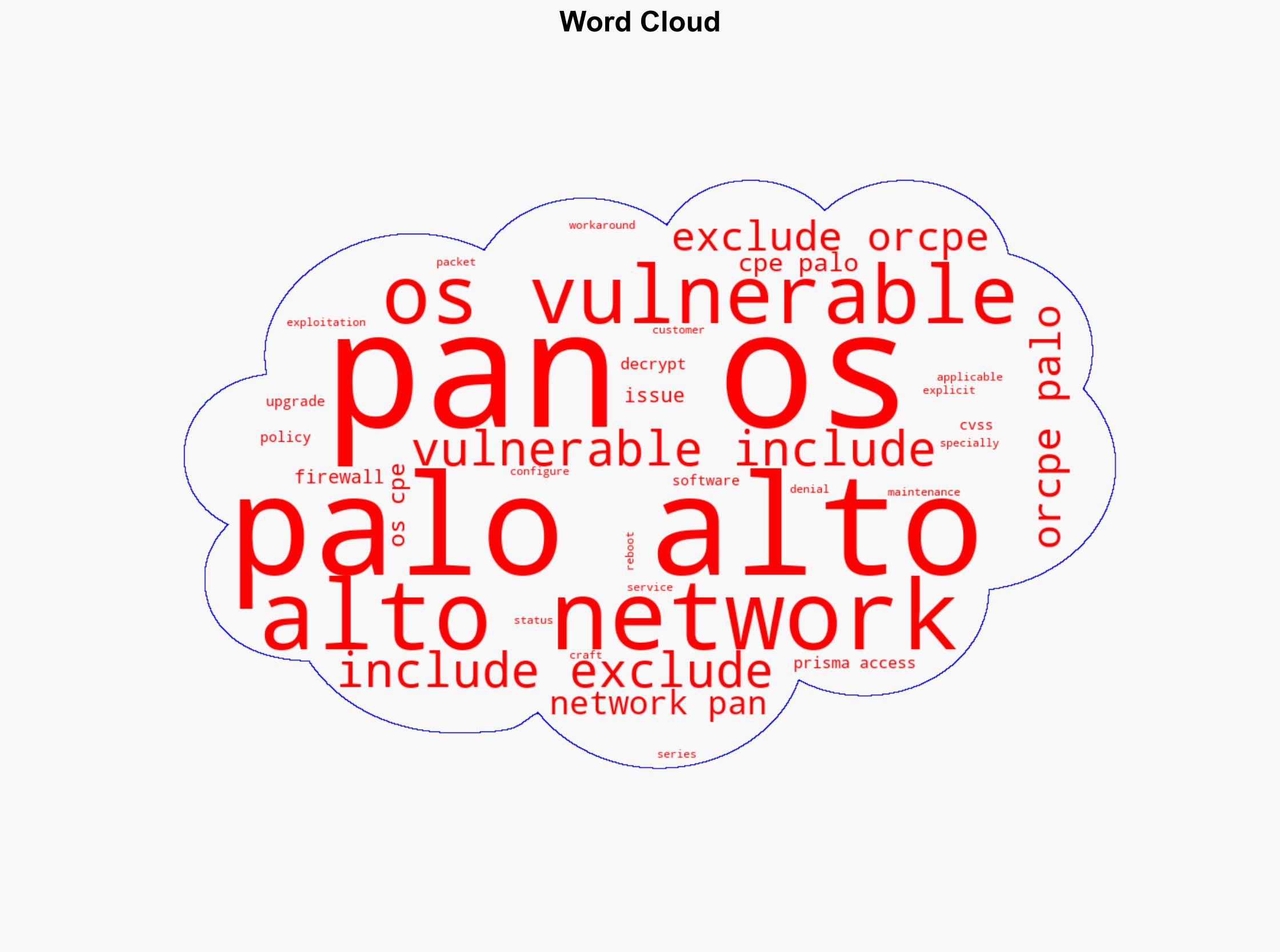CVE-2025-4619 PAN-OS Firewall Denial of Service DoS Using Specially Crafted Packets Severity MEDIUM – Paloaltonetworks.com
Published on: 2025-11-12
AI-powered OSINT brief from verified open sources. Automated NLP signal extraction with human verification. See our Methodology and Why WorldWideWatchers.
Intelligence Report: CVE-2025-4619 PAN-OS Firewall Denial of Service DoS Using Specially Crafted Packets Severity MEDIUM – Paloaltonetworks.com
1. BLUF (Bottom Line Up Front)
The CVE-2025-4619 vulnerability in Palo Alto Networks’ PAN-OS allows unauthenticated attackers to trigger a denial-of-service (DoS) condition by sending specially crafted packets. The most supported hypothesis is that this vulnerability is primarily a result of inadequate input validation in the PAN-OS software. Strategic recommendations include immediate patching and enhanced monitoring. Confidence level: Moderate.
2. Competing Hypotheses
Hypothesis 1: The vulnerability is due to inadequate input validation, allowing specially crafted packets to cause a DoS condition.
Hypothesis 2: The vulnerability is a result of a deliberate backdoor or oversight during the software development process.
Hypothesis 1 is more likely given the commonality of input validation issues in software vulnerabilities and the lack of evidence suggesting intentional malfeasance.
3. Key Assumptions and Red Flags
Assumptions: The vulnerability is unintentional and not exploited in the wild. The severity is accurately assessed as medium.
Red Flags: Lack of detailed technical analysis from independent sources. Potential underreporting of exploitation incidents.
Deception Indicators: None identified, but the absence of independent verification is a concern.
4. Implications and Strategic Risks
The vulnerability poses a risk of service disruption for organizations using affected PAN-OS versions. If exploited, it could lead to significant operational downtime, especially if timed with critical business operations. There is a potential for cascading effects if attackers exploit this vulnerability as part of a broader campaign targeting multiple organizations.
5. Recommendations and Outlook
- Actionable Steps: Urgently apply patches provided by Palo Alto Networks. Implement enhanced monitoring for unusual traffic patterns that may indicate exploitation attempts.
- Best Scenario: Rapid patch deployment mitigates the vulnerability with minimal disruption.
- Worst Scenario: Exploitation leads to widespread service outages, affecting critical infrastructure and resulting in significant financial and reputational damage.
- Most-likely Scenario: Organizations experience minor disruptions before patching, with no major exploitation incidents reported.
6. Key Individuals and Entities
No specific individuals are mentioned. Palo Alto Networks is the primary entity involved.
7. Thematic Tags
Cybersecurity
Structured Analytic Techniques Applied
- Adversarial Threat Simulation: Model and simulate actions of cyber adversaries to anticipate vulnerabilities and improve resilience.
- Indicators Development: Detect and monitor behavioral or technical anomalies across systems for early threat detection.
- Bayesian Scenario Modeling: Quantify uncertainty and predict cyberattack pathways using probabilistic inference.
- Network Influence Mapping: Map influence relationships to assess actor impact.
Explore more:
Cybersecurity Briefs ·
Daily Summary ·
Methodology





